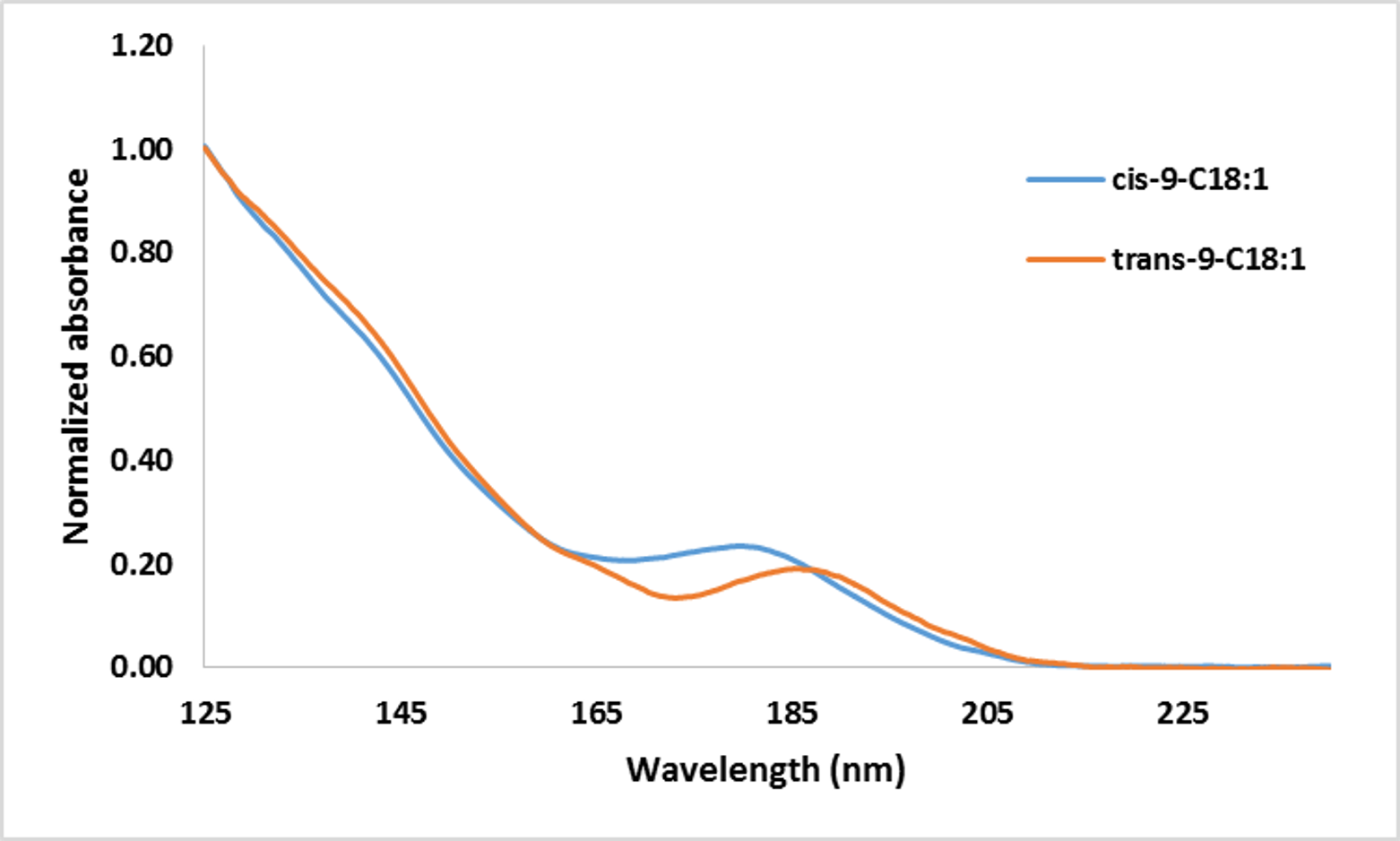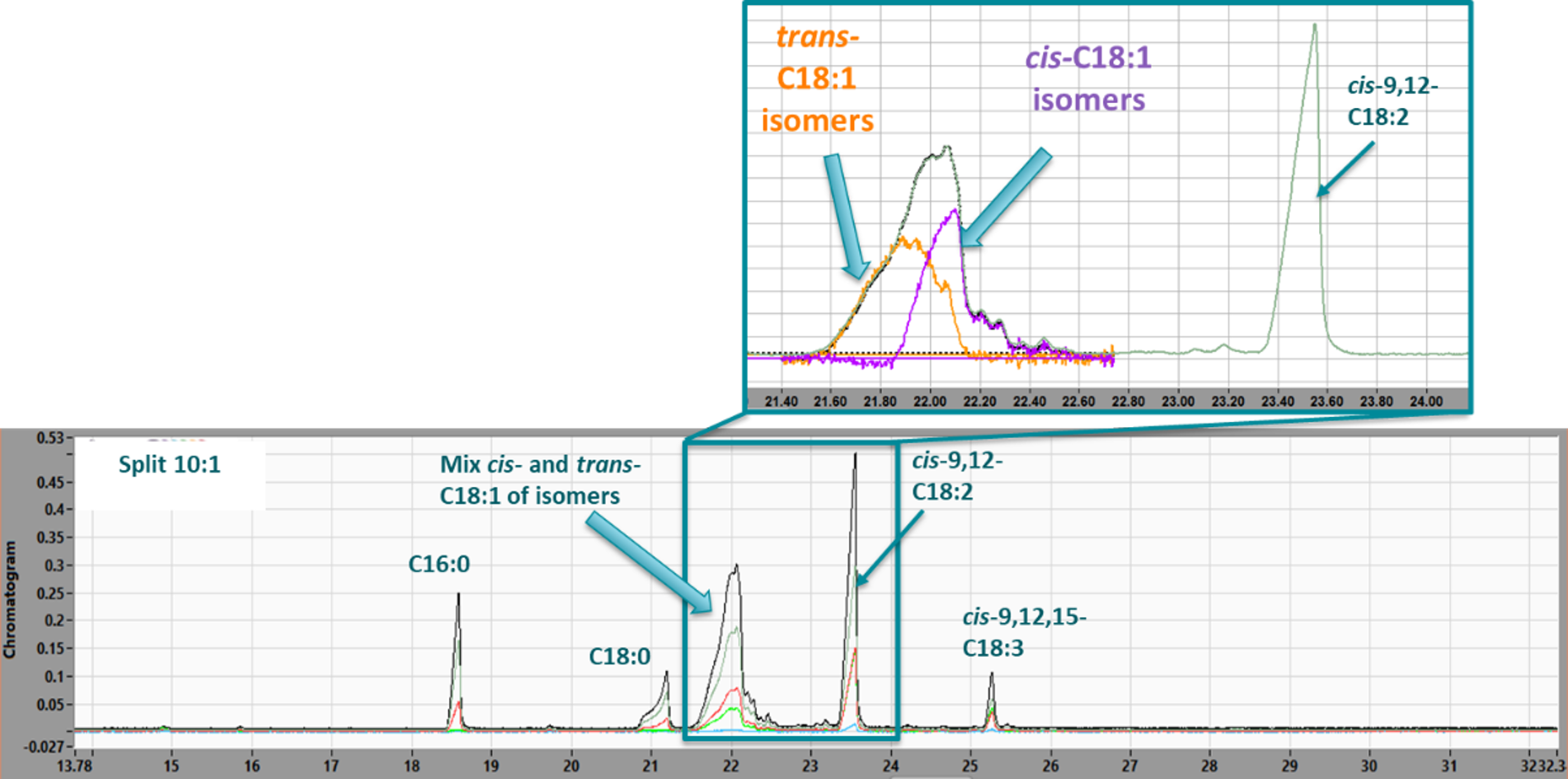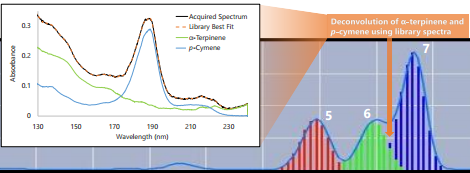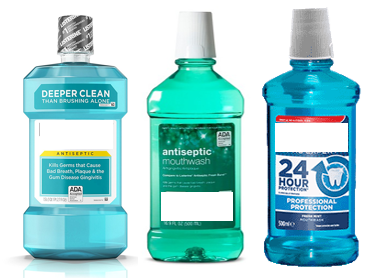Published Jonathan Smuts, VUV Analytics on February 27, 2018
This month I thought I would reflect on something I have worked on for several years since joining VUV Analytics. I am speaking of the analysis of food oils, particularly for the presence of trans-fats. According to the US FDA, “eating trans-fat raises the level of LDL (“bad”) cholesterol in the blood. An elevated LDL cholesterol level in the blood increases your risk of developing heart disease, the leading cause of death in men and women in the U.S.” Furthermore, “Removing PHOs (partially hydrogenated oils) from processed foods could prevent thousands of heart attacks and deaths each year. FDA has taken steps to remove artificial trans-fats in processed foods.” [1]
Foods such as baked goods, frostings, potato chips, French fries, shortening, and stick margarines all fall under this umbrella as, historically, they were made using PHOs. According to Bill Christie, a well-known lipid chemist and who, despite being retired for 20 years, still scans the literature and writes a scientific blog, “there is no shortage of published methods [for trans-fat], but how good are they? I have a distinct impression that a search is on for shortcuts in the methods, when none is possible. Everyone wants a method that can be given to a trainee technician, who may be expected to plough through hundreds of samples each day. In fact, trans fatty acid determination is a problem that still requires a skilled analyst with interpretative ability.” [2]
Admittedly, Dr. Christie had not heard of gas chromatography with vacuum ultraviolet spectroscopy (GC-VUV) until very recently and perhaps his impressions will change as a result. I hope as you read this blog that your impressions about trans-fat determination will also change. Historically, the standard methods for trans-fat determination include:
- GC-FID using highly-polar bis(cyanopropyl) columns to achieve cis- and trans-fat separations.
- Fractionation using Ag+ chromatography in combination with GC-FID.
- Reversed-phase HPLC with RI or ELSD type detectors.
- IR-based methods, including FTIR and GC-FTIR.
Each of these methods has advantages and disadvantages, requiring varying levels of skill. Since they have been accepted as standard, I will assume my reader is familiar with them and move on to describe how GC-VUV can be ranked amongst these and perhaps be the elusive “shortcut” that Dr. Christie alludes to above.
When we look at the VUV absorption spectra for a typical cis- and trans- C18:1 isomer, the distinction between the two isomers is most apparent in the 160 – 200 nm region (Figure 1). Having said that, there is also some similarity in the spectra. All this is expected when you consider the two molecules. Each molecule consists of an 18 carbon, aliphatic chain which will dominate the 125 – 160 nm part of the spectrum. The double bond is also common, but the geometry is different, and this is reflected in the longer wavelength region. The spectral distinction between cis and trans allows for the deconvolution of these classes when they overlap (Figure 2).

Figure 1. VUV absorption spectra for cis and trans-9-C18:1 fatty acid methyl esters (FAMEs). Note the spectral distinction in the 160 – 200 nm region.

Figure 2. VUV absorption spectra deconvolution of cis and trans C18:1 FAME isomers in margarine containing PHVO. The GC column is a 100m x 0.25mm x 0.20µm Rt-2560.
The news gets better! Not only does VUV show distinction between monounsaturated fatty acid isomers, but also di- and tri-unsaturated fatty acids (Figure 3). Since trans-containing PUFAs are also potentially harmful, the need to distinguish them from their closely related isomers as well as other FAMEs (saturated, monounsaturated, etc.) that elute near them is important.

Figure 3. VUV spectra allow cis/trans isomer distinction for di-unsaturated (left) and tri-unsaturated (right) FAMEs.
I believe GC-VUV provides a unique blend of some of the advantages from the aforementioned standard methods. As Ag+ chromatography can selectively cut the trans from the cis isomers, so can VUV deconvolve the trans from the cis. FTIR uses the characteristic 966 cm-1 feature to identify trans double bonds, and VUV uses its unique absorption spectra to distinguish trans from cis. In addition, GC-VUV makes use of familiar FAME retention patterns by using the same highly-polar columns.
References:
[1] https://www.fda.gov/food/ucm292278.htm
[2] http://lipidlibrary.aocs.org/History/content.cfm?ItemNumber=40367









Leave a Reply